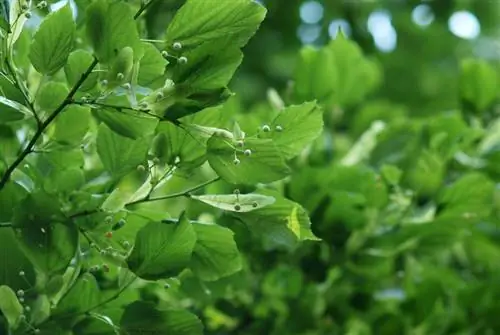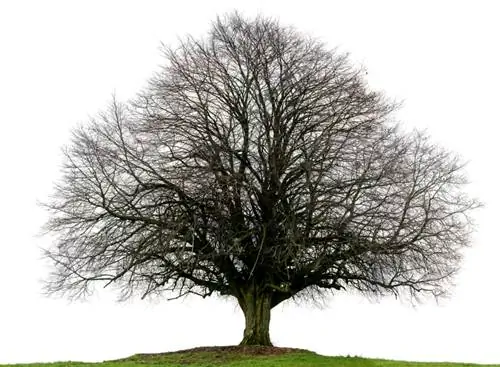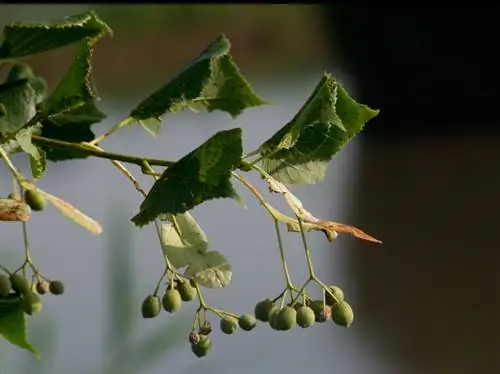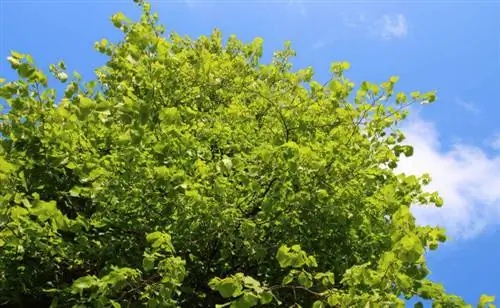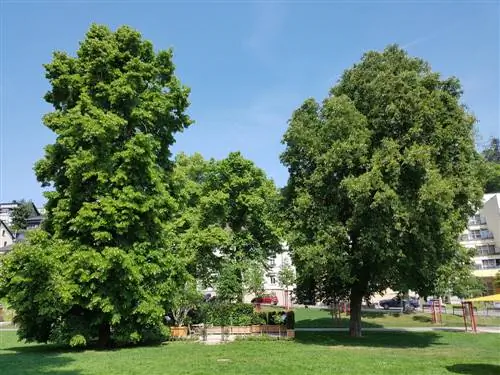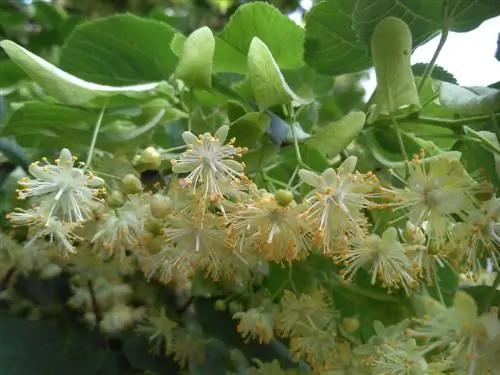- Author admin [email protected].
- Public 2023-12-16 16:46.
- Last modified 2025-01-23 11:20.
Both summer and winter linden trees are deciduous deciduous trees that are widespread throughout Europe. The summer linden tree blooms a little earlier, and there are more similarities than differences between the two types of linden tree.

What are the differences between summer linden and winter linden?
The main differences between summer and winter linden trees are: The summer linden tree (Tilia platyphyllos) has larger, velvety hairy leaves and larger, angular fruits, blooms earlier, about 10-14 days before the winter linden tree (Tilia cordata), the smaller one, leathery leaves and smaller, thinner fruits.
The distribution areas of the summer linden tree are further south than those of the winter linden tree. These two species are equally represented in Central Europe. The Tilia platyphyllos and Tilia cordata both belong to the linden genus in the mallow family. The appearance of the two types of linden trees is very similar, but they can still be distinguished by a few characteristic features:
- Growth and branching,
- Sheet size and surface,
- Inflorescences and flowers,
- Fruits.
Growth behavior in comparison
In general, lime tree species are fast-growing and long-lived. Both the winter and summer linden trees are very large trees that can grow up to 30-40 m high. The summer linden tree requires more light and forms a denser crown than the winter linden tree.
Leaves as the main differentiator
The leaves of the summer linden tree are about 8-12 cm long, uniformly green and herbaceous, velvety hairy on both sides. Leaf stems also have hair. There are whitish axillary beards on the underside of the leaves, which turn brownish in late summer. The winter linden tree, on the other hand, has smaller, approximately 4-7 cm long leaves that are leathery and have a lighter, blue- to gray-green underside. The petiole and the leaf itself are glabrous on the upper side, while the lower side has brownish axillary beards.
Flowers and fruits
The two types of linden trees can form flowers at the age of 10-20 years, which is quite early considering their life expectancy (up to 1000 years). The start of flowering varies, depending on the location and weather conditions. In general, the lush flowering begins in June, with the summer linden tree blooming about 10-14 days earlier than the winter linden tree. There are 5 to 11 whitish flowers on the inflorescence of the winter linden tree. The inflorescences of the summer linden tree only bear 2 to 5 whitish-green flowers.
The lime blossoms attract all kinds of insects that ensure pollination. The flowers turn into fruits: large, woody and distinctly angular in the case of the summer linden tree; soft, thin and easily crushable in the winter lime tree. Many fruits do not contain seeds, which is why the propagation of the two types of linden trees by seeds is rather rare in nature. Vegetative propagation through stick or root rash is the more common type of propagation among domestic linden species.
Tip
Dried lime blossoms are used in herbal tea blends. Linden blossom tea is used in folk medicine for colds as an expectorant and diaphoretic.

